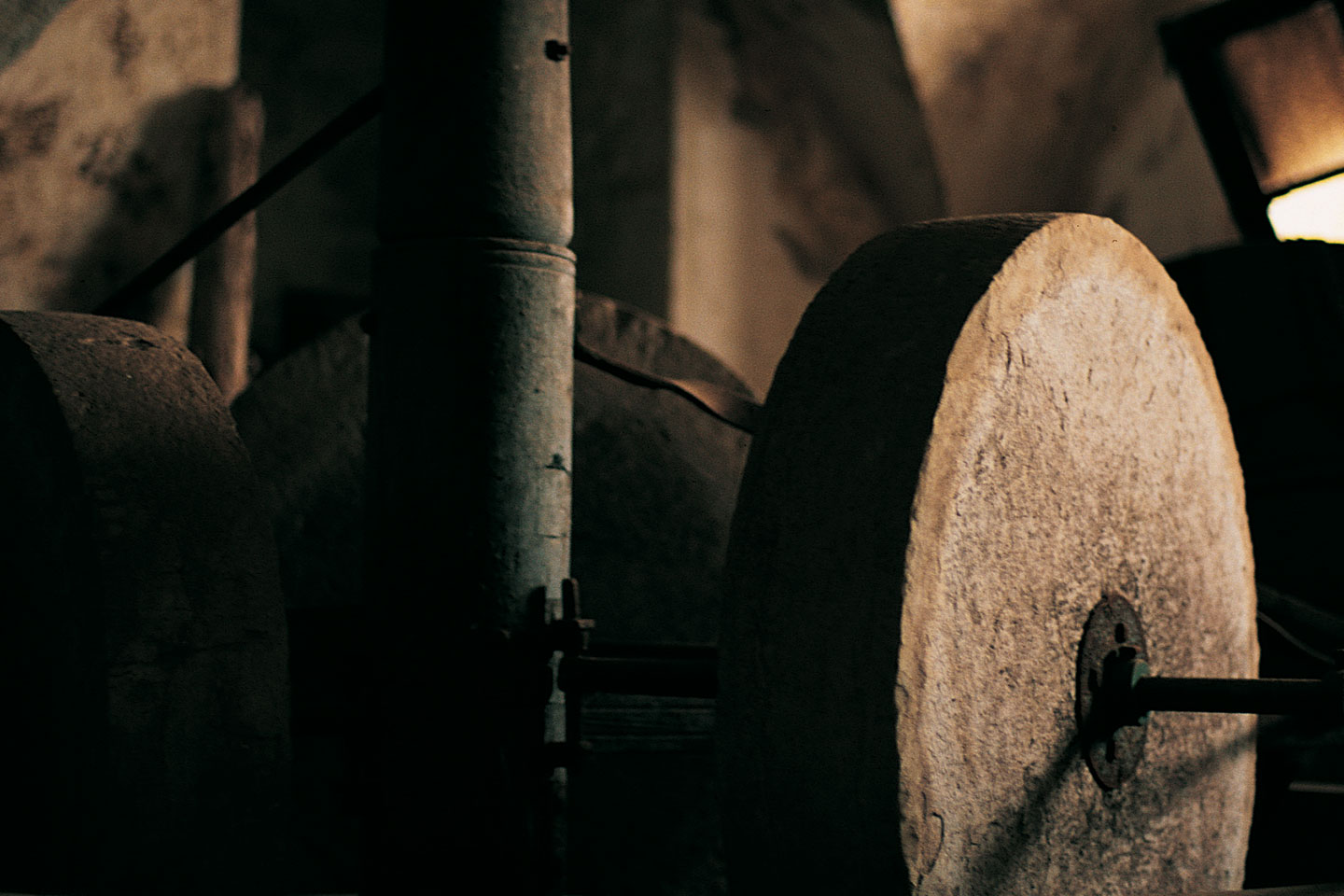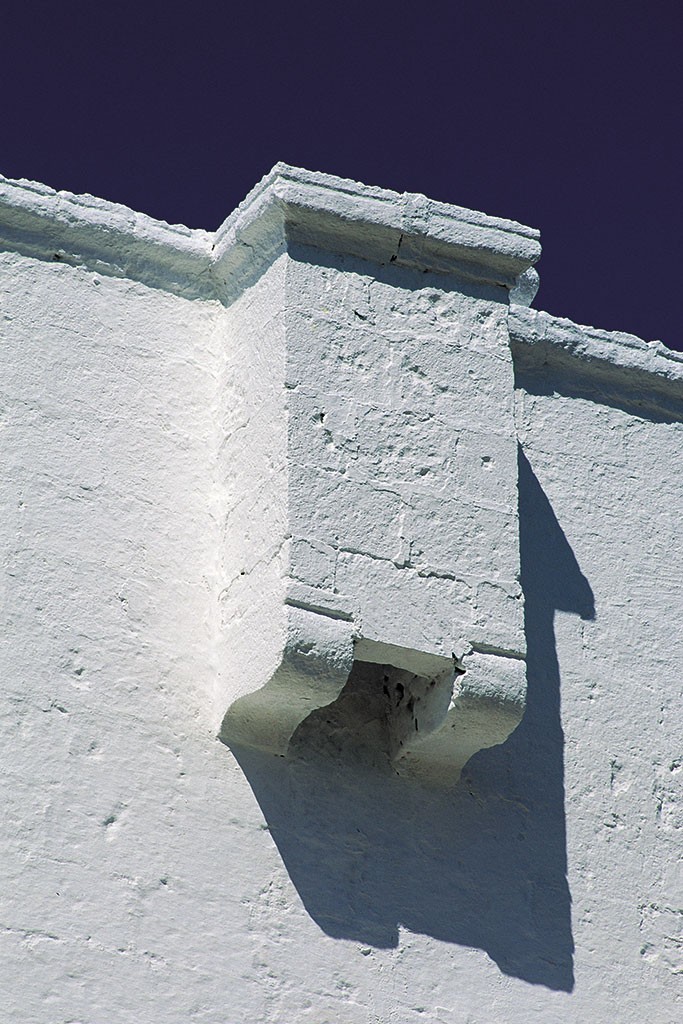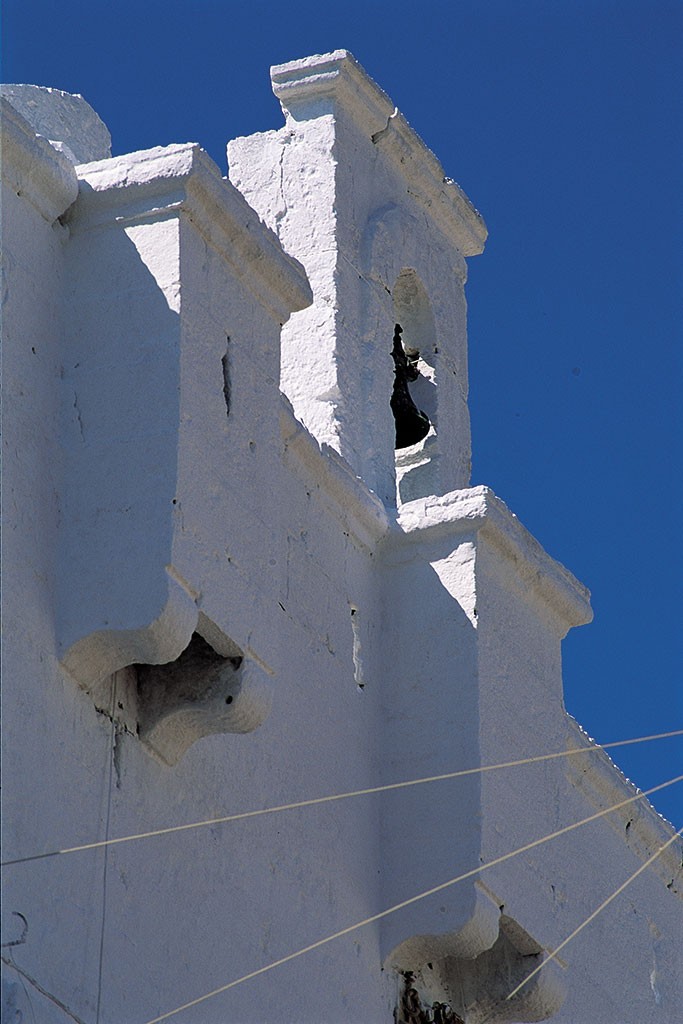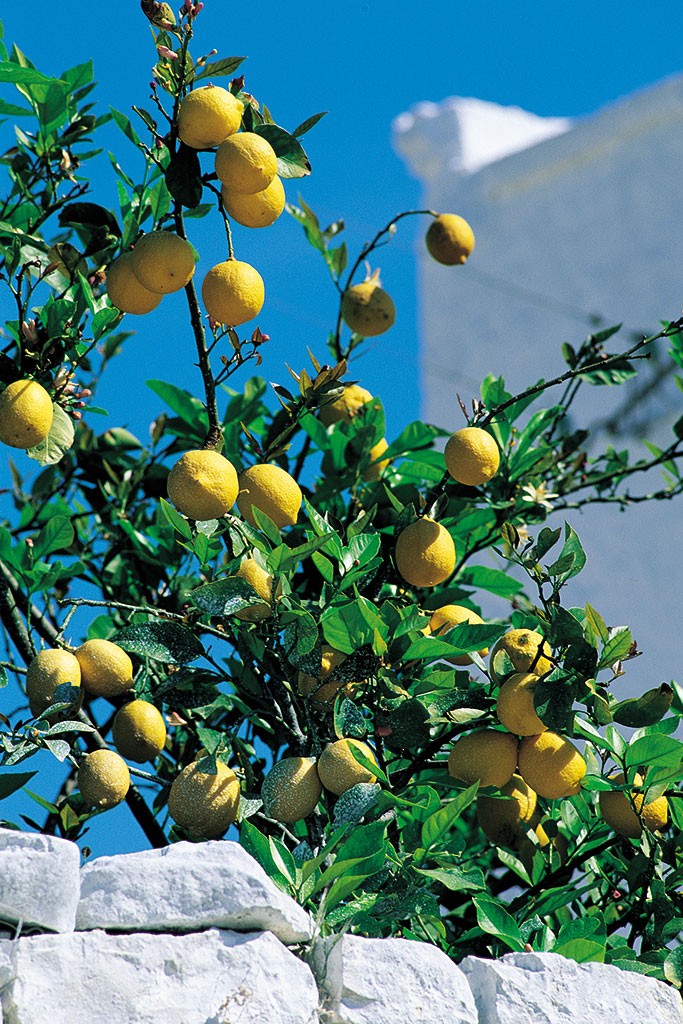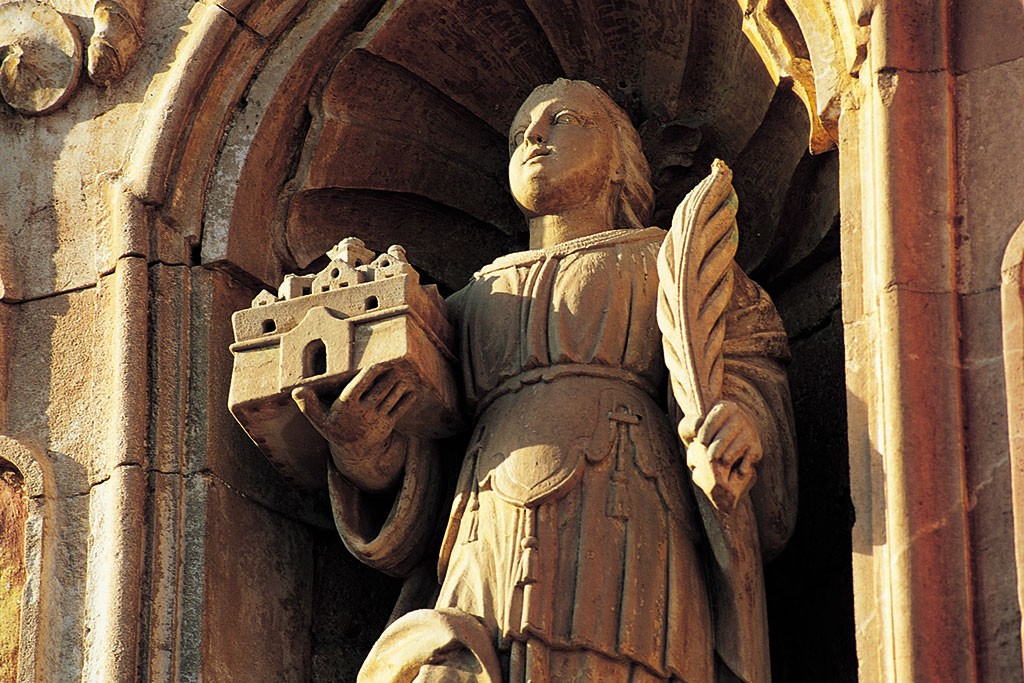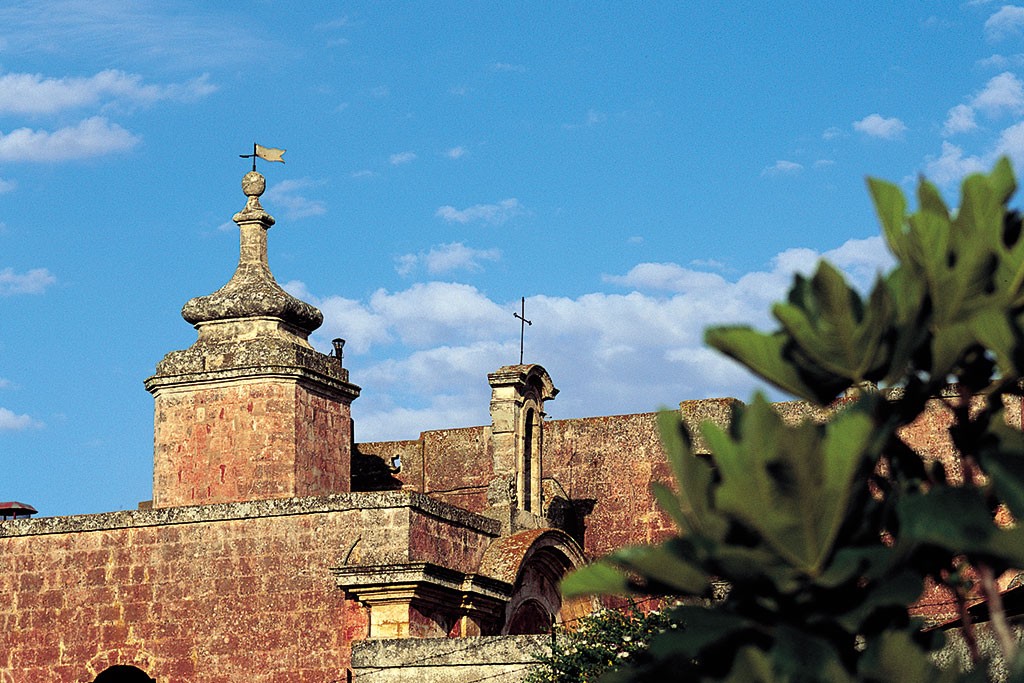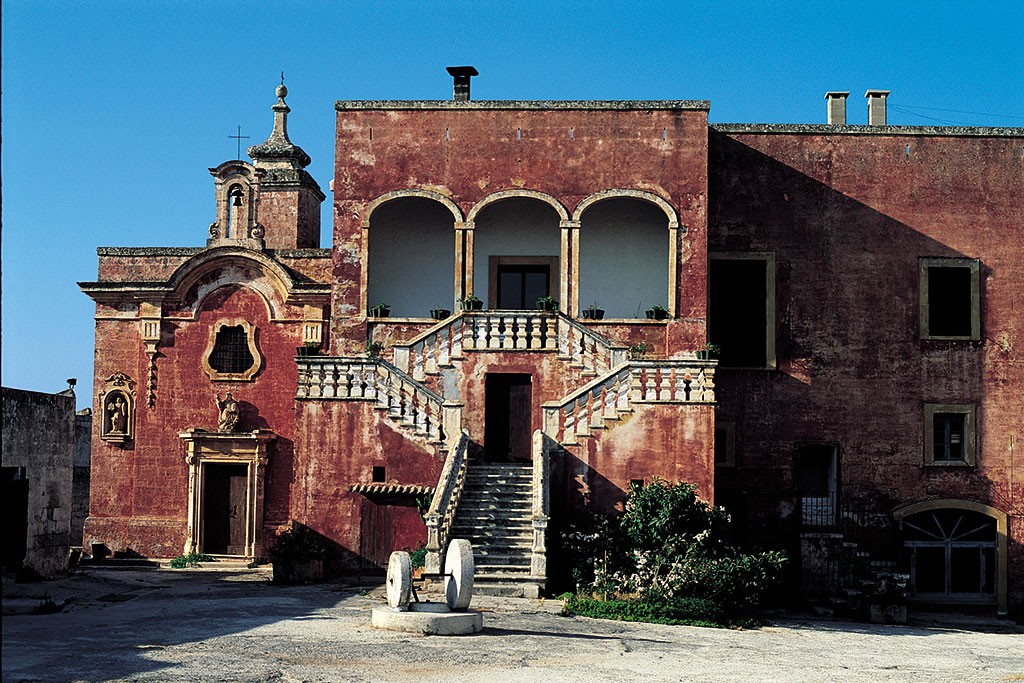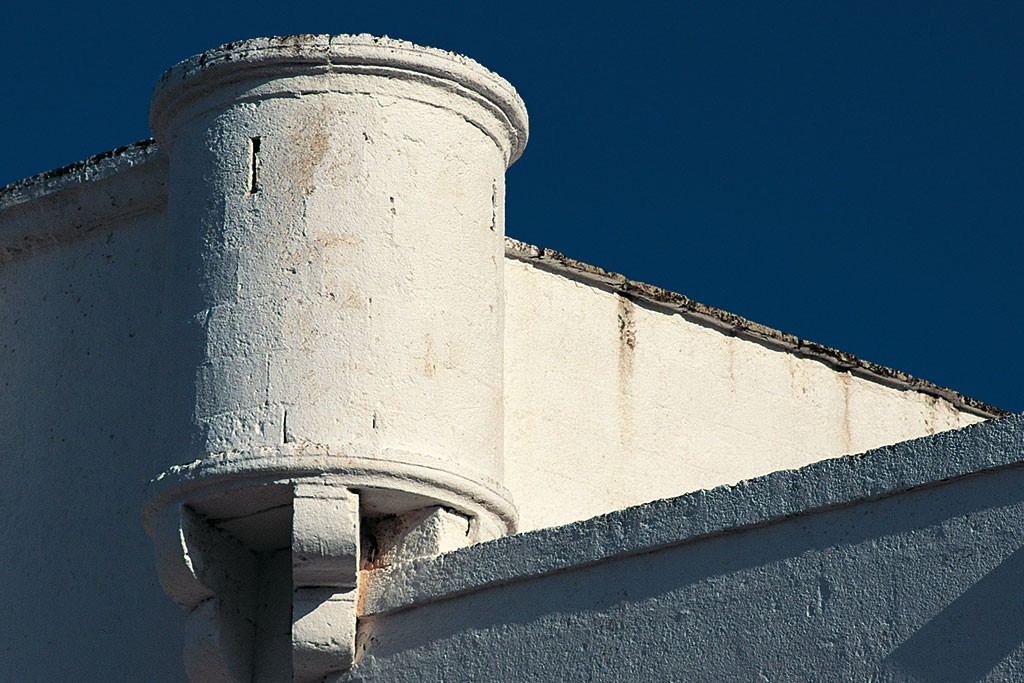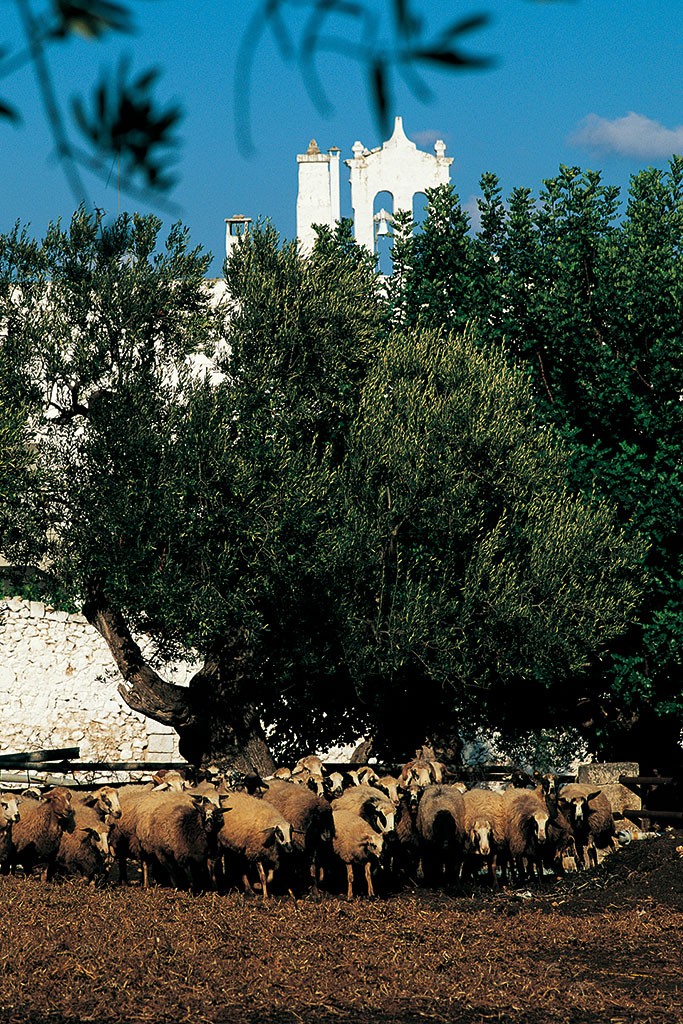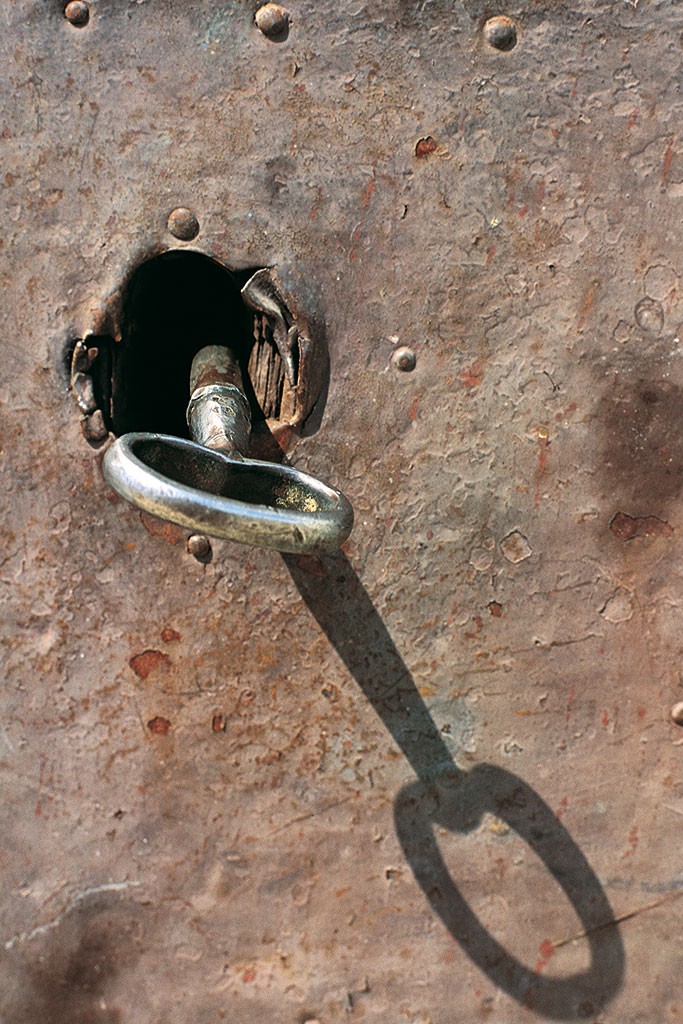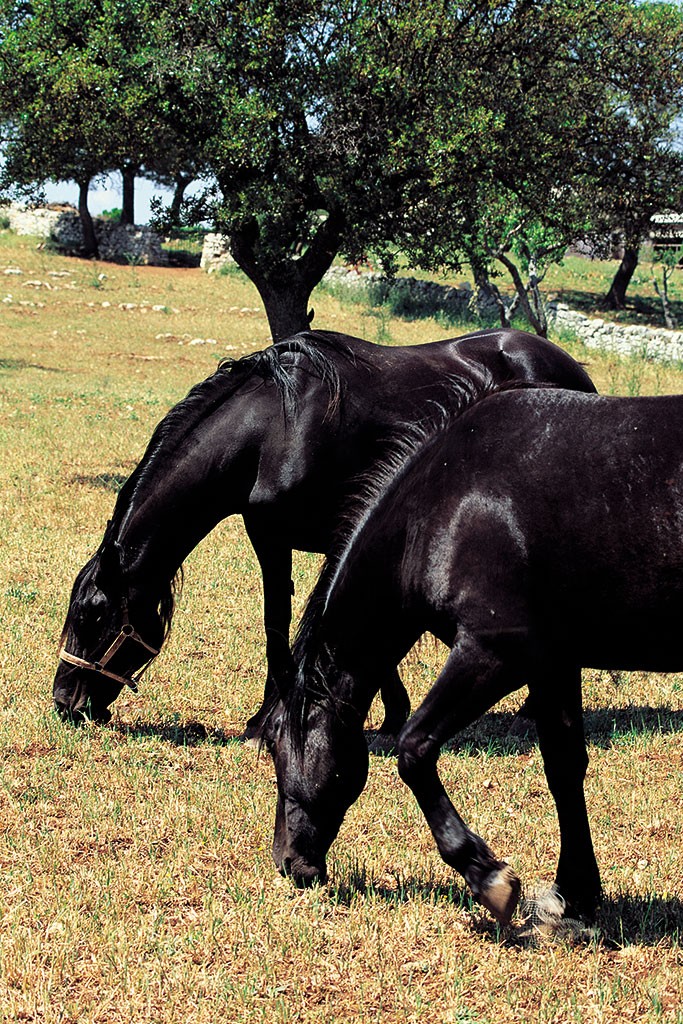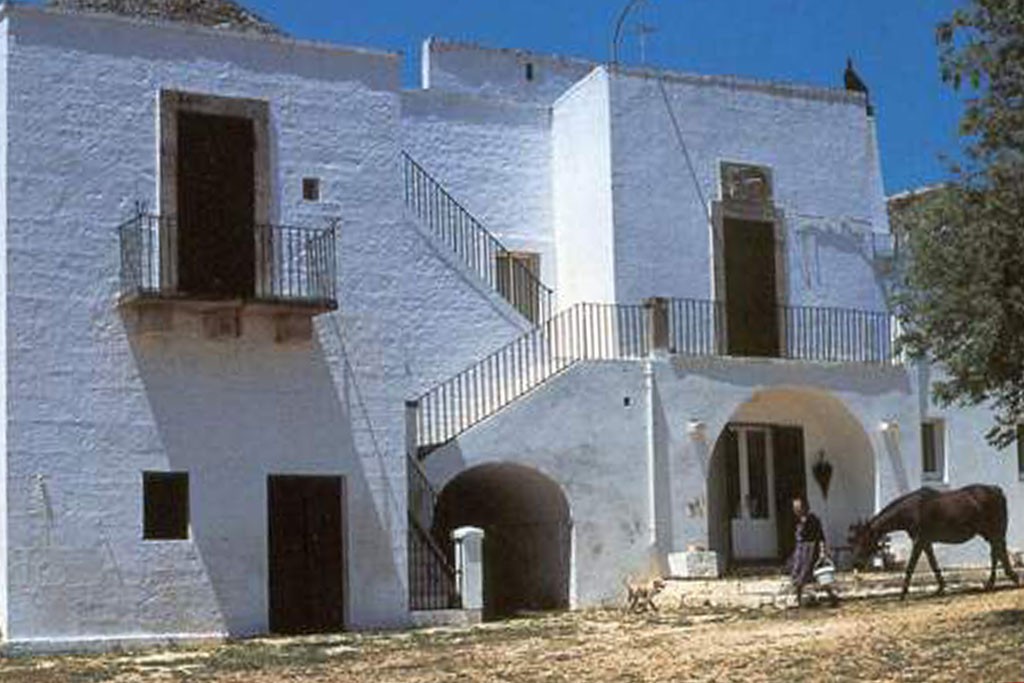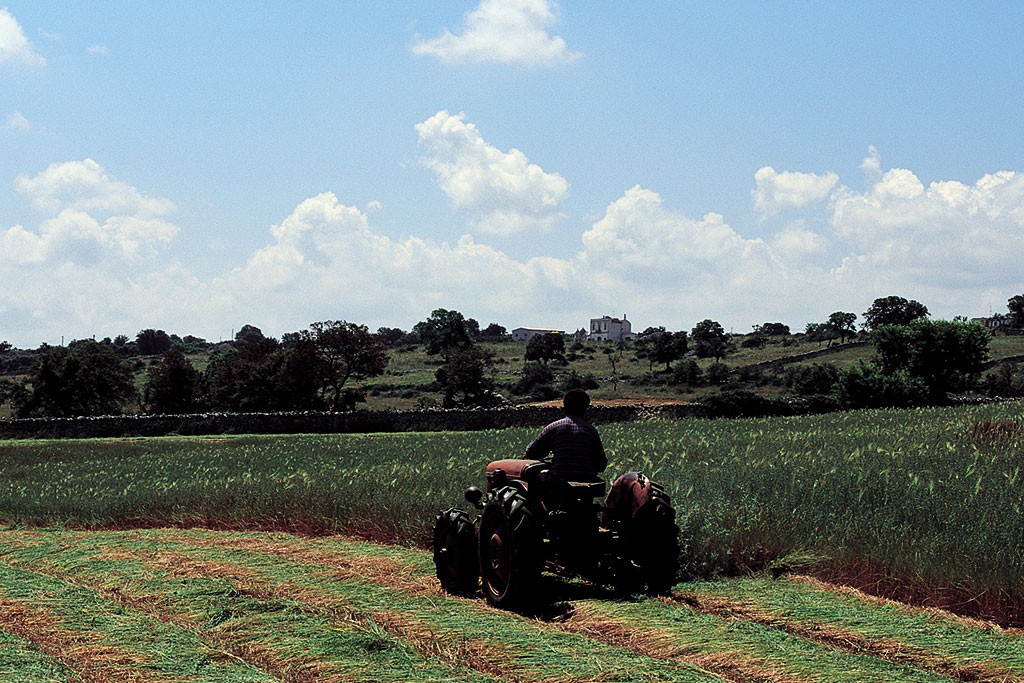Lasciamo la fascia costiera per esplorare l’entroterra dell’agro alla scoperta di altri accattivanti tipologie costruttive. In contrada Conchia sorge l’omonima masseria, costruita nel seicento dalla nobile famiglia Palmieri. Altrettanto affascinante è la masseria Caramanna (1659), altro fiore all’occhiello della nostra Monopoli. E risalendo la collina accarezzerai la graziosa bellezza della masseria Petrarolo da dove si domana tutta la zona pedemurgiana che sfocia nella “marina”, mentre in piena collina conoscerai la storicità di masseria Cavallerizza.
Posizione
Nell’agro
Tempo
10/20 min
Mezzo
auto/bici
Masseria Petrarolo
The entrance to this masseria is characterised by a large archway that leads to a courtyard paved with chianche (a typical Apulian stone) which was once the centre of agricultural life. Surrounding the court there are positioned a number of large storehouses, an old stable with twelve feeding troughs in the rough wall together with arches and niches that were certainly once used as a dovecote. There is also a tiny door that leads to a small citrus grove. Other spaces of interest were formed in the underlying part of a former drawbridge By type Petrarolo is classified as a fortified masseria without a tower. A staircase leads you to a two floor building with a complex defence system including three machicolations (which are all different from one another), a bell tower and a series of embrasures. There is also a very high terrace which served as a watch tower and a surrounding wall which served as protection. In the 1700s the masseria was owned by Francesco Petrarolo family In fact on the main façade there is an inlaid bas-relief of the noble family. Opposite the citrus grove there is a small church (1698) dedicated to the Madonna delle Grazie (Saint Maria). The interior is characterised by only one room where there is a central fresco maybe 18th Century depicting the Virgin with her child to which residents of the local contrada are still devoted.
Masseria Caramanna
A long and narrow road leads you to one of the most important rural complexes of this area, announced by two superb columns you will be captivated by the masseria Caramanna in a majestic location and introduced by an airy forecourt. It is characterised by a particular winding staircase that is placed in a rather irregular way facing east, put there to protect an ancient and venerable palm tree. It is a significant work of art made by unknown and skilful hands. This element goes beyond a purely utilitarian function but creates a background, the linear balustrade of the terrace, from which the scenery ranges from gentle hilly profiles to the sea.
This building, evidenced by a stone plaque, was built in 1659 and its original structure is still preserved including a quadrangle tower-house at the heart of the complex with a drawbridge (no longer the original one), a small bell tower, many embrasures whose arcs of fire cross towards the entrance and single or double machicolations. The austere structure has developed progressively over the centuries to become a four floor masseria with a tower element. To testify the importance of religious worship in the buildings’ history there is a simple church with a stone plaque dated 1820. In this masseria the rural spirit is still very much alive.
Masseria Conchia
A long narrow road through the wonderful ancient olive trees, the anxiety grows to discover what lies ahead. An emotion that only increases when you are presented with a unique example of architecture and one that evokes the enchanted seduction of a pastoral setting of yesteryear. Immersed in a colourful and unspoiled natural environment Conchia is an imposing building with a beautiful entrance portal, which was commissioned by Bishop Palmieri and dates back to between the XVII –XVIII centuries (consequently it was donated to the town of Monopoli in 1931 under the orders of Marquis Palmieri. Whose noble lineage is still present in a relief bearing the official coat of arms of the Palmieri family. Its monumental structure makes it look like a battleship, endowed with two entrances to function as a filter serving to underline a strong social economy, always gravitating around therein. The shear volume of its white facades, with its imposing staircase and double bell-gables immediately catch your attention. Furthermore there are the different defensive elements including four bartizan watchtowers posted on the corners of the terrace, a series of embrasures and a central machicolation. These are testimony to the numerous pillages which once targeted the farm. In a central position there is the manor house while the other rooms are situated on the ground floor. Almost all these rooms have an opening on the outside but are not connected to the upper floor. You can reach the first floor only thanks to the two external staircases. However, these are placed in front of the watchtowers and towards the embrasures. Two small houses overlook the courtyard. From a small internal courtyard one can see a votive bas-relief depicting the Virgin Mary and Christ on the cross. An interesting small church of the 1700s which is separated from the farmhouse stands out. In the middle of the courtyard there is a statue of the “Madonna of Madia” that seems to protect all the wonders of the countryside and her citizens.
Masseria Cavallerizza
On the slope of a sinuous hill in the lower Murgia, in a strategic position stands Masseria Cavallerizza, rich in history and tradition and proud of its position in its environment between olive trees and trulli (typical Apulian buildings constructed entirely from stone with conical roofs). This masseria which was built under the orders of Alfonso d’Aragona between 1495 and 1530 was an important stud farm for horses and belonged to the “Serenissima” Republic of Venice: from the crossbreeding between local and Arabian horses the famous ‘morello race’ was born which is a typical Apulian black horse which was particularly adapted to battle. The practice of horse training was carried out in the ‘canale di Pilo’, where the horses’ skills were improved by being ridden on a series of particular tracks. On the façade of the masseria, there are two entrances leading to the farmhouse, one dedicated to the owner and the other to pastoralist activities. A bas-relief represents the lion of Saint Marco. Moreover, this area was also rich in trees used for the production of wood which was important for the shipyards in Venice and for the production of saltpetre for gunpowder. Masseria Cavallerizza is a solid structure covered by stone-pitched roofs with a marked slope. Despite having no tower, it has strategic well positioned terraces and its austere profile is given by few openings. The complex consists of a central core with a ground floor and first floor both with vaulted ceilings. In the courtyard there are different designated working areas. In 1840 according to undisputable historical sources all the original part of the masseria was bought by Pietro Rotolo and Marcantonio Sgobba which they left as inheritance to their sons. Next to the masseria there is also a small church featuring a series of 18th Century frescoes.
Events in Monopoli
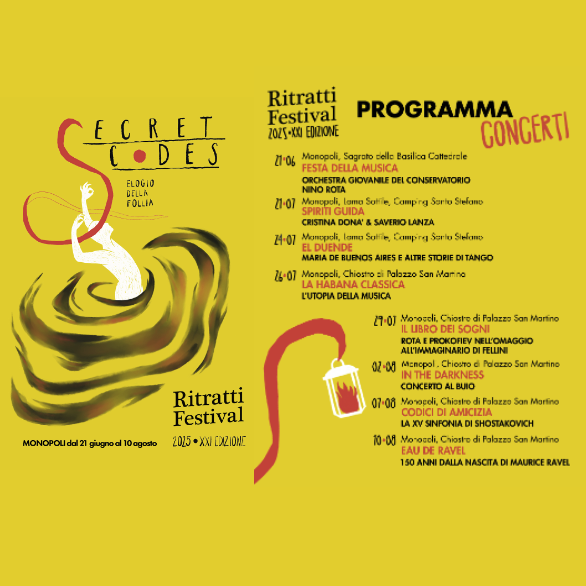
Ritratti Festival: 12 concerts from July 3 to August 10, 2025, in Monopoli
16 July 2025A musical experience capable of intertwining art and landscape, memory and experimentation, and promoting the talent of emerging young artists alongside…
Read More
Experience Summer 2025 in Monopoli | Events Schedule
15 July 2025Events, City Festivals, District Festivals… Enjoy your Summer 2025 in Monopoli, discover the Events Program! Download the program Potrebbe interessarti… “Monopoli…
Read More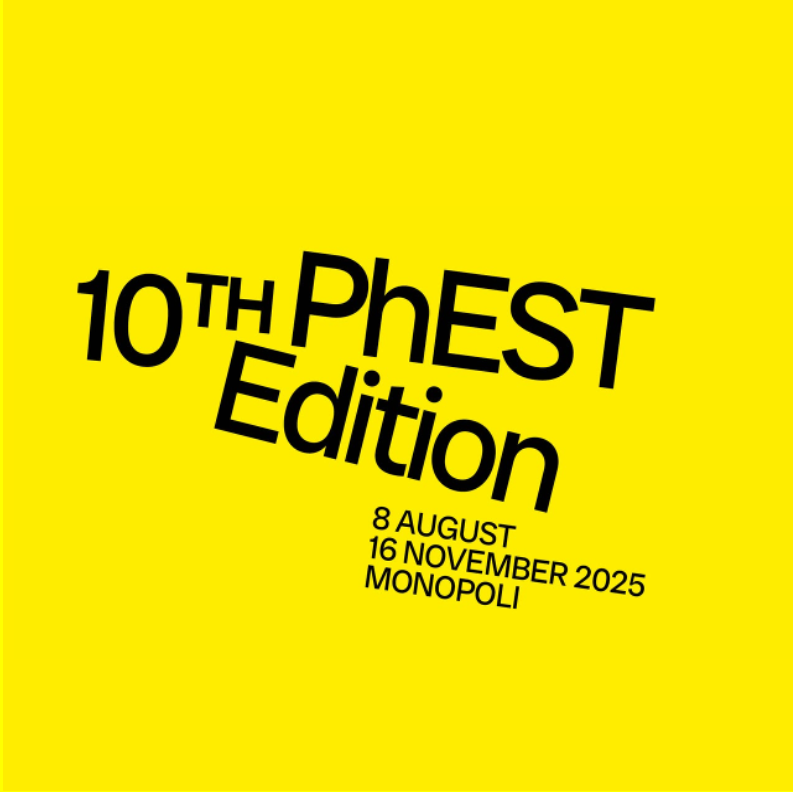
PhEST – International Festival of Photograpy and Art | MONOPOLI 08/08-16/11 2025
15 July 2025From August 8 to November 16, 2025, PhEST – International Festival of Photography and Art celebrates its tenth edition in Monopoli,…
Read More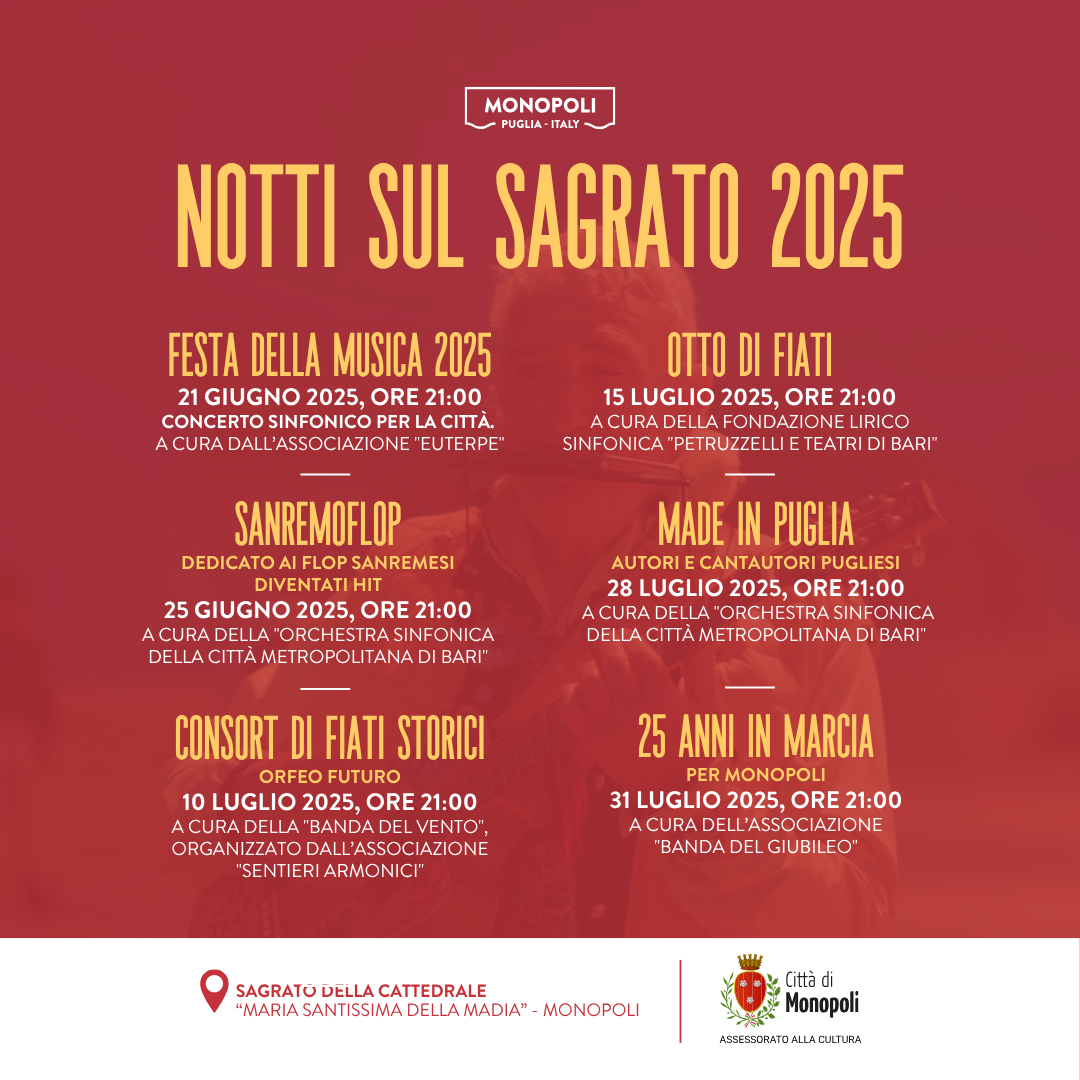
From 21 June 2025 six “Nights on the Cathedral Square”
20 June 2025Opening night with the preview of the Ritratti Festival and the Rota Conservatory Orchestra This year too, Monopoli is preparing to…
Read More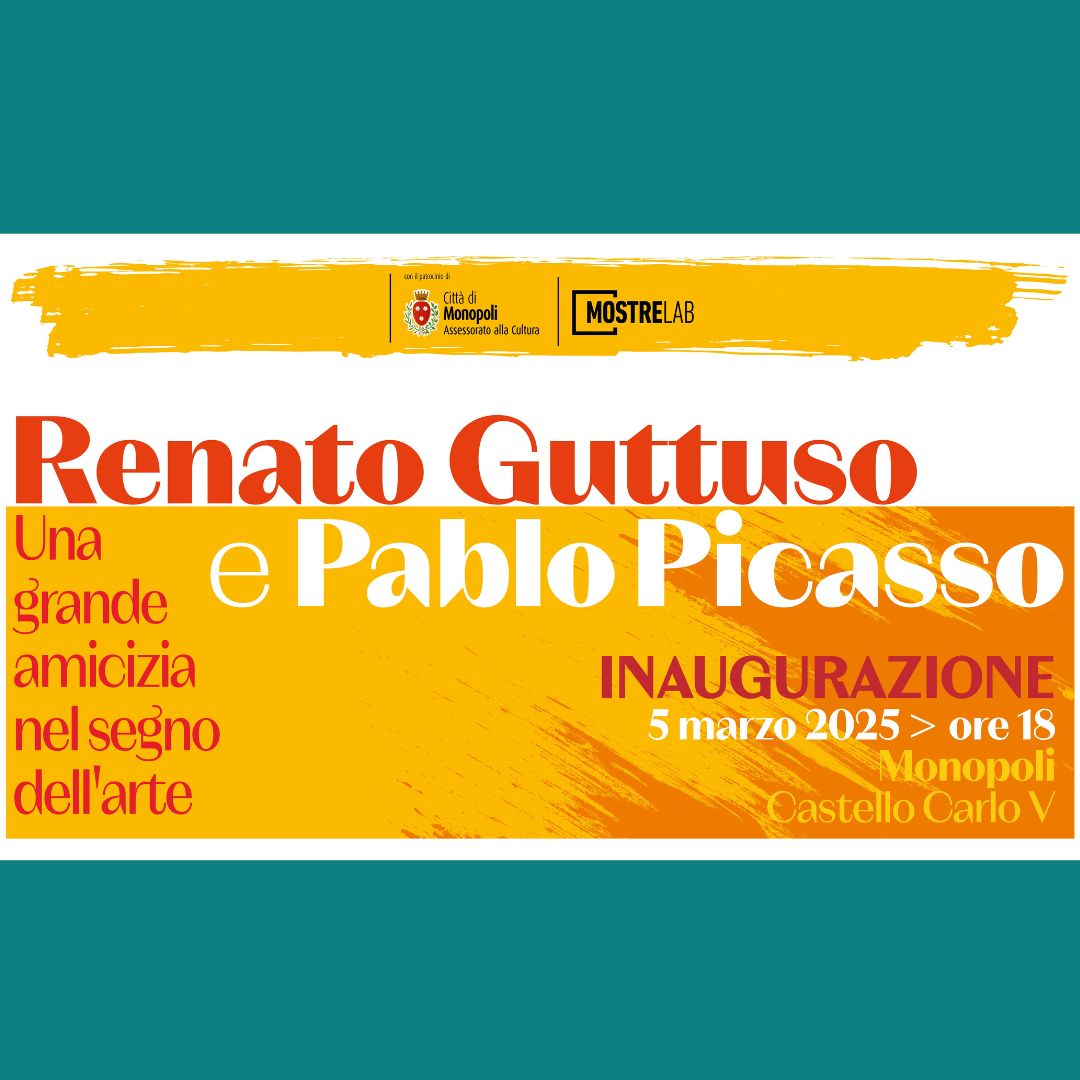
Guttuso and Picasso: Comparing Visions at the Castello Carlo V
20 February 2025From 5 March to 3 August 2025, Castello Carlo V will host an unprecedented event: Renato Guttuso and Pablo Picasso –…
Read More
Destination Christmas: immersive installations, shows and events
28 November 2024The show by Pino Campagna and Antonio Stornaiolo, accompanied by the aerial dance performance by the Eleina D Company and the…
Read More